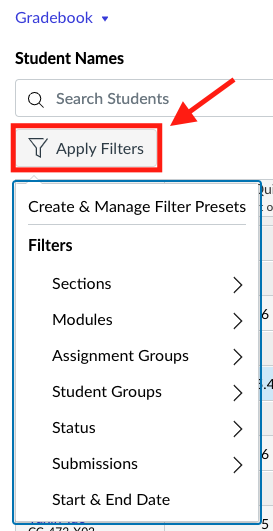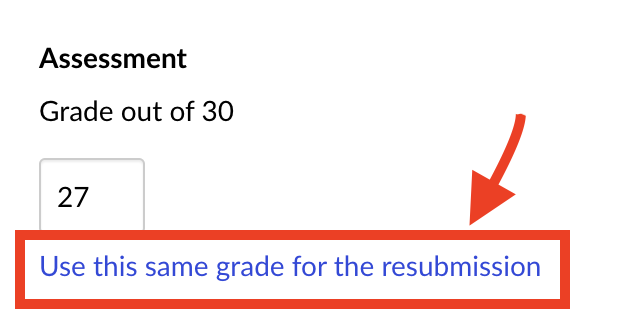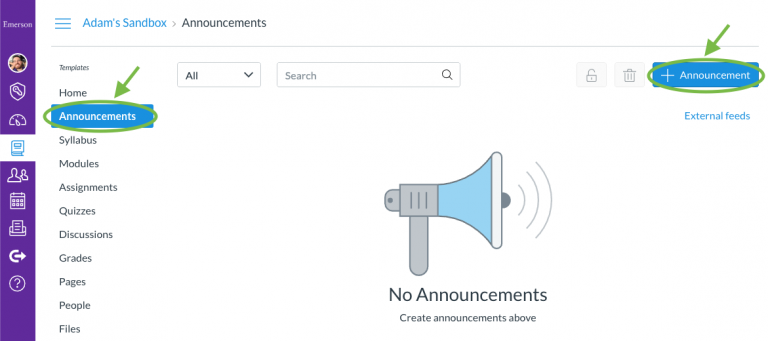Gradebook Features You Need to Know!
We are nearing the end of the semester and ITG is offering Gradebook workshops. Please register here of you’d like a refresher on the Canvas Gradebook:
The article below was originally published on October 17th, 2023. We’re revisiting it to help faculty wrap up grades for the semester.
Gradebook Features You Need to Know!
The gradebook is one of the trickiest things to figure out in Canvas. But, once you understand how it works and all it can do, it can be a really powerful tool. Read on for the gradebook features and capabilities you should know about!
Before we dive in, remember that anything that is graded in your course should be built as a graded assignment in your course. Creating a graded assignment is the only way to create a new column in your gradebook. Be sure to see our Gradebook Guide for more information on setting up your gradebook and other gradebook basics.
Late and missing policies
For any late submission in Canvas, you can set a deduction of a number or percentage of points for each hour or day that an assignment is late. Remember, for a submission to be considered late in Canvas, it needs to have been submitted after the due date you set.
A missing submission policy allows you to set a grade that is applied automatically to any missing submissions. For an assignment to be considered missing for a student, it needs to be past the due date you set for the assignment with no submission submitted.
We recommend going over these policies in your syllabus so that students are aware of them from the start of the class.
Set Default Grade As
This feature can help you grade more easily and more quickly, depending on the type of assignment you’re grading. When you set a default grade, you’re in effect telling Canvas to give everyone the same grade for a particular assignment. A use case example is if you’re grading an assignment on the complete/incomplete scale and you know everyone should be marked “complete”, you can set the default grade to “complete” so that you don’t need to enter in each grade one-by-one. Note that if this feature is used, the default grade will be applied for all students for the chosen assignment regardless of submission status, but you can override the default grade for individual students if necessary.
Use filters or the search to easily find assignments and students
Do you ever find yourself scrolling and scrolling through your Gradebook, struggling to locate the particular assignment you’re looking for? Thanks to the several options available to reduce the sheer size of your Gradebook, those days of endless scrolling are over.
One of those options is to use the filters in the Gradebook. You can filter by:
- Modules
- Assignment Groups
- Student groups (does not filter by assignments/columns; only filters students/rows)
- Sections (for cross-listed courses only which have been merged by ITG)
- Submission status (late, excused, missing, etc.)
- Submissions (has submissions, has no submissions, has ungraded submissions, or has unposted grades)
- Assignment start & end dates
To enable these filters, or to create your own filter, click Apply Filters from the top of your Gradebook and choose one of the filtering options:

You can then view the currently-selected filters at the top of the gradebook; click X on any filter to remove it:

Another option that can help you easily find assignments or people is to use the search bars at the top of your gradebook to search by assignment, by student, or both:

Individual view
Few people may realize that there’s another version of the gradebook called the individual view. With the individual view, you can assign and view grades for one student and one assignment at a time. To switch to individual view, navigate to your gradebook, then click the Gradebook drop-down menu at the top left and select Individual View. To switch back to the regular view, click the drop-down menu at the top right and select Gradebook.
Access SpeedGrader from the Gradebook
There are a couple ways you can access the SpeedGrader for an assignment: you can click into a graded assignment and select SpeedGrader on the right hand side, but there’s also a convenient way to access it from the gradebook. In the gradebook, simply locate the assignment you want to view in the SpeedGrader, then click the vertical ellipses in the header of the column for that assignment. From the menu that appears select SpeedGrader.
Excuse a student from an assignment
If you need to excuse a student from an assignment for any reason, there’s a way to reflect that in Canvas in such a way that the student will not be penalized for not submitting the assignment. To change the submission status of an assignment to “excused” for a student, locate the assignment in the gradebook, then locate the cell in the assignment column corresponding to the student. Click the small arrow, then select Excused in the right side panel.
Grade Posting Policies
One of the best features of the gradebook is the ability to use grade posting policies to control when students are able to view their assignment grades and feedback. There are two posting policies:
- Manual Posting Policy: allows you to release grades/feedback only when you are ready to release them
- Automatic Posting Policy: allows for grades and feedback to be released to students automatically and immediately as soon as the assignment is graded
By default, gradebooks are on the Automatic Posting Policy, but you can change the policy either for your entire gradebook or on an assignment-by-assignment basis.
Grade an assignment that’s been resubmitted
By default, unlimited attempts are allowed on assignments, meaning that your students will be able to submit to an assignment as many times as they’d like. If you grade an assignment for a student, then the student later re-submits to the same assignment, you’ll need to regrade the assignment via the SpeedGrader (re-grading from the Gradebook will not work).
In the SpeedGrader, you’ll see that you can either enter a new grade for the new submission, or click Use this same grade for the resubmission to use the same grade for the second submission as you did for the first:

Related gradebook tip: A green cell in your gradebook indicates that the assignment has been resubmitted.
Need more gradebook help?
Reach out to us at itg@emerson.edu or 617-824-8090 if you need help with setting up or using your gradebook in Canvas.


